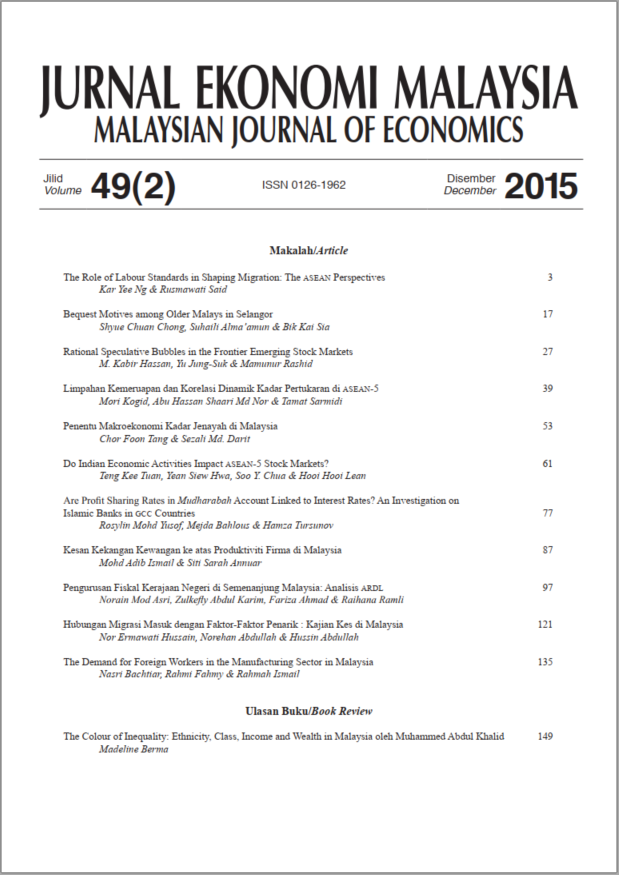Jurnal Ekonomi Malaysia
49 (2) 2015 53 – 60
Centre for Policy Research and International Studies
Universiti Sains Malaysia
11800 USM Pulau Pinang
MALAYSIA
Centre for Policy Research and International Studies
Universiti Sains Malaysia
11800 USM Pulau Pinang
MALAYSIA
Abstract
The increasing trend of crime rate would detriment the economic growth of a country. Therefore, the purpose of this study is to investigate the macroeconomic determinants that affect crime rate in Malaysia. This study covers yearly data from 1970 to 2013. To achieve the objective of this study, we use the bounds testing approach to cointegration and the Granger causality tests. Our study finds that unemployment rate, tourism, poverty and security levels are affecting crime rate in Malaysia, especially in the long-run. However, the rate of inflation does not influence crime rate in Malaysia. Additionally, this study discovers that tourism is a dynamic variable because the expansion of tourism sector not only reduces the crime rate while it also reduces the rate of unemployment and the level of poverty. In line with the Economic Transformation Programme (ETP), policymakers should promote the development of tourism sector.
Keywords
Similar Articles
- Labour Market Reactions to Lockdown Measures during the Covid-19 Pandemic in Malaysia: An Empirical Note
- The Economic of Deterrence: A Wrong Policy or A Misplaced Strategy?
- Impak Pembangunan Homestay dalam Kalangan Komuniti Rancangan Kemajuan Tanah Persekutuan (Felda), Malaysia
Bibliography
@article{tang2015penentu,
title={Penentu Makroekonomi Kadar Jenayah di Malaysia},
author={Tang, Chor Foon and Md. Darit, Sezali},
journal={Jurnal Ekonomi Malaysia},
volume={49},
number={2},
pages={53—60},
}
Receive updates when new articles are published.


